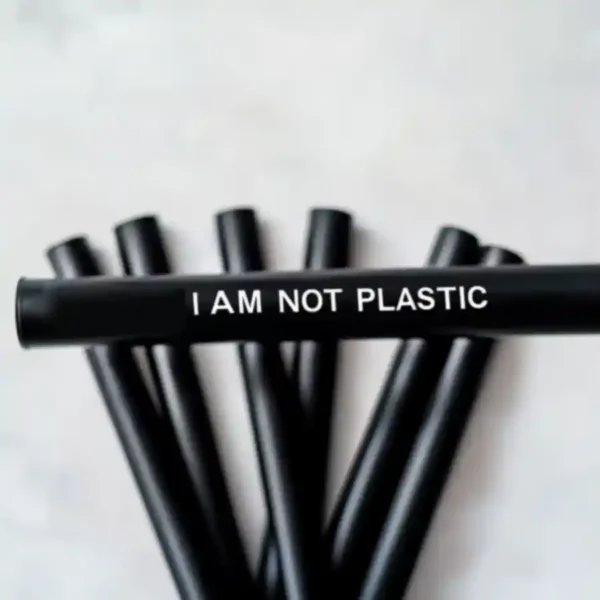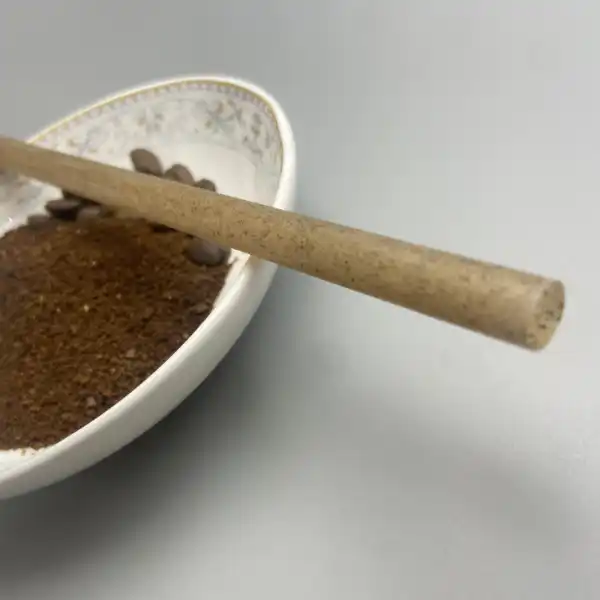
I. Introduction
Picture this: You’re at a trendy café, feeling eco-conscious as you sip your iced latte through a “green” straw. But is it truly biodegradable? Or compostable? And wait – aren’t those the same thing? If you’re puzzled, you’re not alone.
In 2023, a staggering 76% of consumers mistakenly believed all biodegradable straws were compostable (Global Packaging Insights Report, 2024). This confusion isn’t just semantics – it’s leading to millions of straws in landfills that won’t break down as expected.
Today, we’re cutting through the green-washed marketing to reveal the truth about biodegradable and compostable straws. By the end, you’ll be equipped to make truly eco-friendly choices and maybe even school your local barista.

II. Defining Key Terms
Biodegradable: Nature’s (Very Slow) Recycling
Definition: Materials that can be broken down by microorganisms (bacteria or fungi) into water, carbon dioxide, and biomass.
The Catch: No set timeframe. A “biodegradable” straw could take anywhere from 3 months to 100+ years to decompose.
Compostable: Mother Nature’s Fast Track
Definition: Materials that break down into non-toxic components (water, carbon dioxide, biomass) in about 90 days under commercial composting conditions.
Key Difference: Compostable items are always biodegradable, but biodegradable items are not always compostable.
Certification Matters
- Look For:
- Biodegradable Products Institute (BPI) logo
- TÜV Austria “OK compost HOME” or “OK compost INDUSTRIAL” labels
Expert Insight: Dr. Jane Foster, Environmental Scientist at Stanford, warns: “Many ‘biodegradable’ labels are essentially greenwashing. Without specific certifications, these claims are often meaningless in practical terms.”

III. Decomposition Processes: A Tale of Two Straws
| Condition | Biodegradable Straw | Certified Compostable Straw |
|---|---|---|
| Landfill | 100+ years | 100+ years |
| Backyard Compost | 1-5 years | 6-12 months (if home compostable certified) |
| Industrial Compost | 6 months – 5 years | 90 days or less |
| Ocean | 2-5 years | 6 months – 2 years |
Case Study: The Ocean Conservancy’s 2024 report found “biodegradable” plastic straws intact after 3 years in marine environments, while certified compostable options showed significant degradation within 18 months.

IV. Real-World Performance and Certification
The PLA Problem
Polylactic Acid (PLA) straws are often labeled “biodegradable,” leading to confusion:
- Reality Check: PLA requires industrial composting facilities (reaching 140°F/60°C) to break down in a reasonable timeframe.
- Availability Issue: Only 27% of US households have access to industrial composting (US Composting Council, 2024).
Sugarcane Success Story
Sugarcane-based straws from reputable manufacturers often carry both home and industrial composting certifications:
- Green Sip Co. Example: Their straws decompose in 90 days in industrial facilities and 180 days in home compost bins.
- Third-Party Verified: TÜV Austria certification ensures real-world performance matches claims.
V. Consumer Implications: Making Informed Choices
How to Spot Truly Eco-Friendly Straws:
- Look for Certifications: BPI, TÜV Austria, or other recognized third-party verifications.
- Check Decomposition Conditions: Does it require industrial facilities, or will it break down in a home compost bin?
- Consider Local Infrastructure: If your area lacks industrial composting, opt for home compostable options.
- Beware Vague Claims: “Eco-friendly” and “Green” are marketing terms, not standards.
Environmental Impact
- Biodegradable (Uncertified): Often end up in landfills, potentially releasing methane as they slowly break down.
- Certified Compostable: Can be processed into nutrient-rich soil when properly disposed of, closing the loop on waste.
VI. Conclusion: Sipping Towards Sustainability
The bottom line? “Biodegradable” and “compostable” are not interchangeable terms. Truly compostable straws, backed by proper certifications, offer a much faster and more environmentally friendly end-of-life solution.
Key Takeaways:
- Always look for specific composting certifications.
- Consider your local waste management options when choosing straws.
- Remember: The most eco-friendly straw is the one you reuse or don’t use at all.
Your Green Mission: Next time you’re offered a “biodegradable” straw, ask about its certifications. Share what you’ve learned – because an informed consumer is the best weapon against greenwashing.
Join the Conversation: Have you encountered misleading straw labels? Share your experiences in the comments below!
Frequently Asked Questions
- What’s the difference between industrial and home composting?
- Industrial composting occurs in controlled environments with high heat and oxygen levels, breaking down compostable materials within 90 days. Home composting is a slower process that depends on local conditions and may not effectively degrade certain compostable plastics.
- How do sugarcane straws compare to other eco-friendly options?
- Sugarcane straws are durable, naturally biodegradable, and compostable in both home and industrial settings. Unlike paper straws, they last longer in liquids, and unlike PLA, they don’t require specialized composting facilities.
- Are PLA straws really better for the environment than regular plastic?
- While PLA straws come from plant-based sources, they still require industrial composting to degrade properly. If disposed of in landfills or oceans, they can persist for years, making them no better than traditional plastic.
- How can I compost straws at home?
- Only home-compostable certified straws will break down in backyard compost bins. Cut them into smaller pieces and ensure proper aeration and moisture balance in your compost pile for efficient decomposition.
- What happens to compostable straws in the ocean?
- Compostable straws require controlled conditions to break down. In marine environments, they degrade much slower, potentially lasting for years and still posing risks to marine life.
- Which restaurants are leading the way in truly compostable straw use?
- Many eco-conscious restaurants and coffee chains have switched to certified compostable straws. Brands like Starbucks, Pret A Manger, and local sustainability-focused cafés are making the shift.
- How do I read and understand composting certifications?
- Look for certifications like BPI (Biodegradable Products Institute) for industrial compostability and TÜV Austria’s OK Compost HOME for home compostability. These indicate the straws meet strict degradation criteria.
- What’s the carbon footprint comparison between biodegradable and compostable straws?
- Compostable straws made from natural materials like sugarcane have a lower carbon footprint compared to PLA or biodegradable plastics, as they rely on renewable resources and decompose naturally.
Sources:
- Global Packaging Insights Report, 2024
- US Composting Council, 2024
- Ocean Conservancy Annual Report, 2024
- Biodegradable Products Institute (BPI) Standards, 2023
- TÜV Austria Certification Guidelines, 2024






